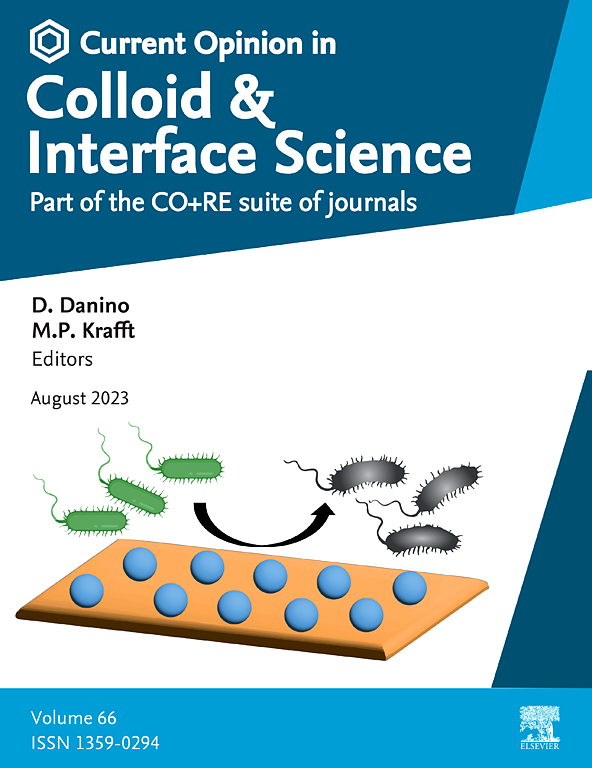微塑料和纳米塑料作为环境中有机污染物的运输载体:综述
IF 7
2区 化学
Q1 CHEMISTRY, PHYSICAL
Current Opinion in Colloid & Interface Science
Pub Date : 2025-06-06
DOI:10.1016/j.cocis.2025.101934
引用次数: 0
摘要
微纳米塑料颗粒对环境中有机污染物迁移的影响一直是科学界争论的话题。微塑料和纳米塑料具有广泛的表面积和与有机污染物相互作用的能力,因此人们经常担心微塑料和纳米塑料会显著提高其流动性,并促进海洋生物对污染物的吸收。对于陆地系统,已经采用了这一假设,这引起了人们的关注,即塑料颗粒可能促进污染物进入更深的土层,从而对地下水资源构成威胁,特别是在农业土壤中。这些土壤通过各种来源获得大量的塑料输入,如有机土壤改良剂、地膜、回收废水和大气沉降。本文综述了有机污染物(包括各种非故意添加的物质和添加剂)与塑料界面之间的分子相互作用。我们批判性地分析了微塑料和纳米塑料作为海洋环境和农业土壤中污染物载体的作用。我们的分析表明,与其他暴露途径相比,海洋环境中通过微塑料和纳米塑料的污染物载体效应通常微不足道。我们对普通塑料添加剂的传质计算表明,由于解吸速度快,微塑料,特别是纳米塑料作为农业土壤中大多数有机污染物的载体的作用是有限的。尽管微塑料和纳米塑料作为载体对运输现象的贡献不大,但认识到它们是潜在有害污染物的重要来源是至关重要的。这些问题必须在即将举行的c -5塑料条约中加以解决。本文章由计算机程序翻译,如有差异,请以英文原文为准。

Micro- and nanoplastics as transport vectors for organic contaminants in the environment: A critical review
The impact of micro- and nanosized plastic particles on the mobility of organic contaminants in the environment is a topic of ongoing scientific debate. Their extensive surface area and capacity to interact with organic contaminants have led to frequent concerns that micro- and nanoplastics significantly enhance their mobility and facilitate contaminant uptake by marine biota. For terrestrial systems, this hypothesis has been adopted, raising concerns that plastic particles could facilitate the transport of contaminants into deeper soil layers, thereby posing a threat to groundwater resources, especially in agricultural soils. These soils receive substantial plastic input through various sources, such as organic soil amendments, mulch, recycled wastewater, and atmospheric deposition. This review examines the molecular interactions between organic contaminants, including a wide range of non-intentionally added substances and additives, and plastic interfaces. We critically analyze the role of micro- and nanoplastics as vectors for contaminants in both marine environments and agricultural soils. Our analysis suggests that the vector effect of contaminants via micro- and nanoplastics in the marine environment is generally insignificant compared to other exposure routes. Our calculations regarding the mass transfer of common plastic additives indicate that the role of micro- and, particularly, nanoplastics as carriers for the majority of organic contaminants in agricultural soils is limited due to rapid desorption rates. Although micro- and nanoplastics do not considerably contribute to transport phenomena as vectors, it is crucial to recognize that they are significant sources of potentially harmful contaminants. These issues must be addressed in the forthcoming INC-5 plastic treaty.
求助全文
通过发布文献求助,成功后即可免费获取论文全文。
去求助
来源期刊
CiteScore
16.50
自引率
1.10%
发文量
74
审稿时长
11.3 weeks
期刊介绍:
Current Opinion in Colloid and Interface Science (COCIS) is an international journal that focuses on the molecular and nanoscopic aspects of colloidal systems and interfaces in various scientific and technological fields. These include materials science, biologically-relevant systems, energy and environmental technologies, and industrial applications.
Unlike primary journals, COCIS primarily serves as a guide for researchers, helping them navigate through the vast landscape of recently published literature. It critically analyzes the state of the art, identifies bottlenecks and unsolved issues, and proposes future developments.
Moreover, COCIS emphasizes certain areas and papers that are considered particularly interesting and significant by the Editors and Section Editors. Its goal is to provide valuable insights and updates to the research community in these specialized areas.

 求助内容:
求助内容: 应助结果提醒方式:
应助结果提醒方式:


